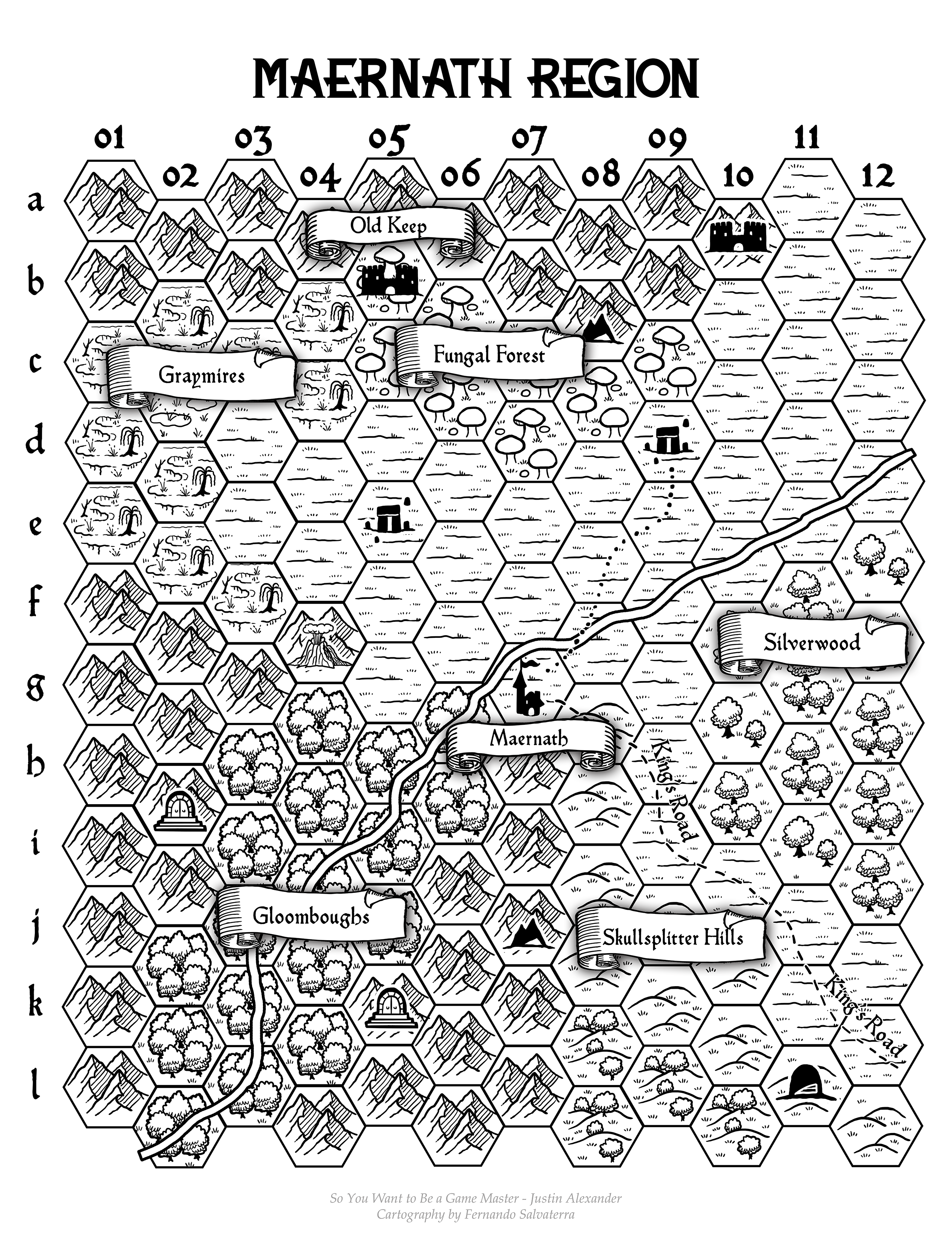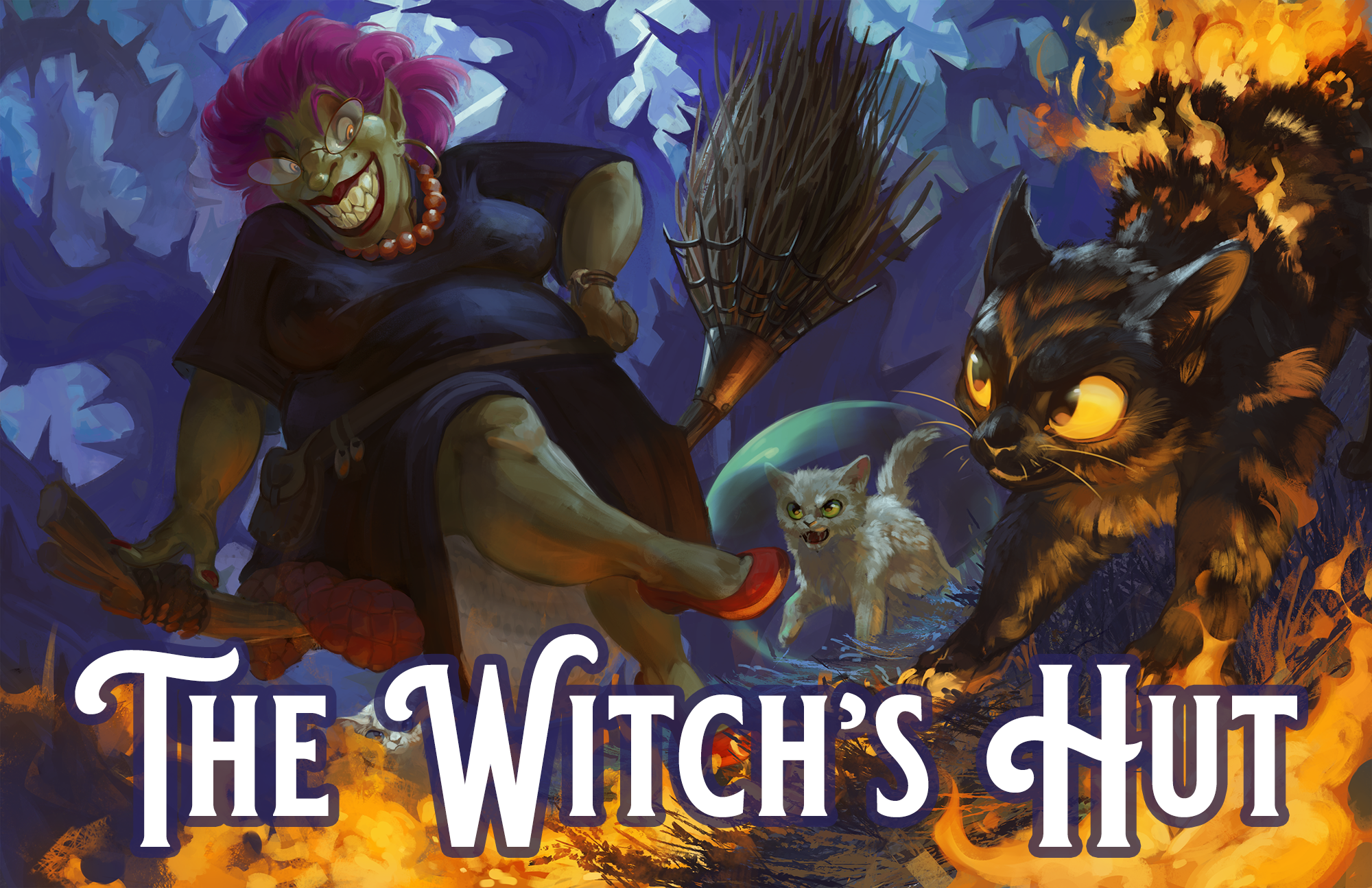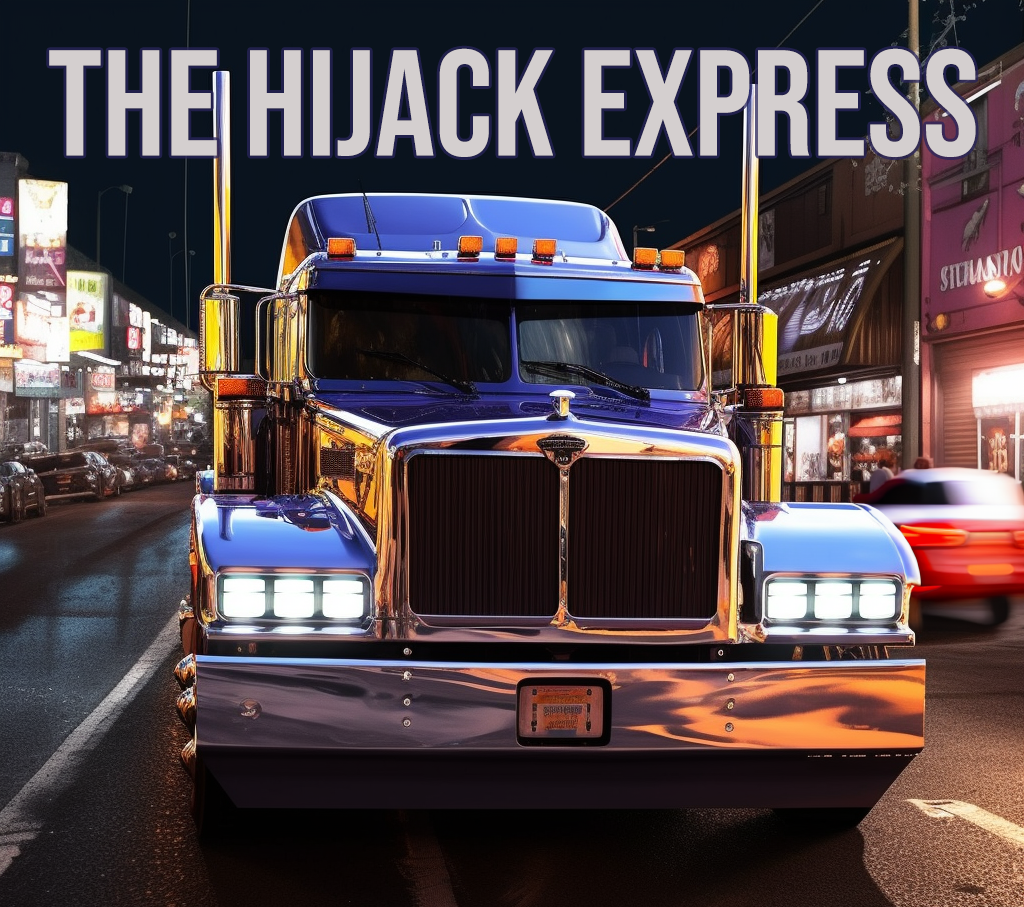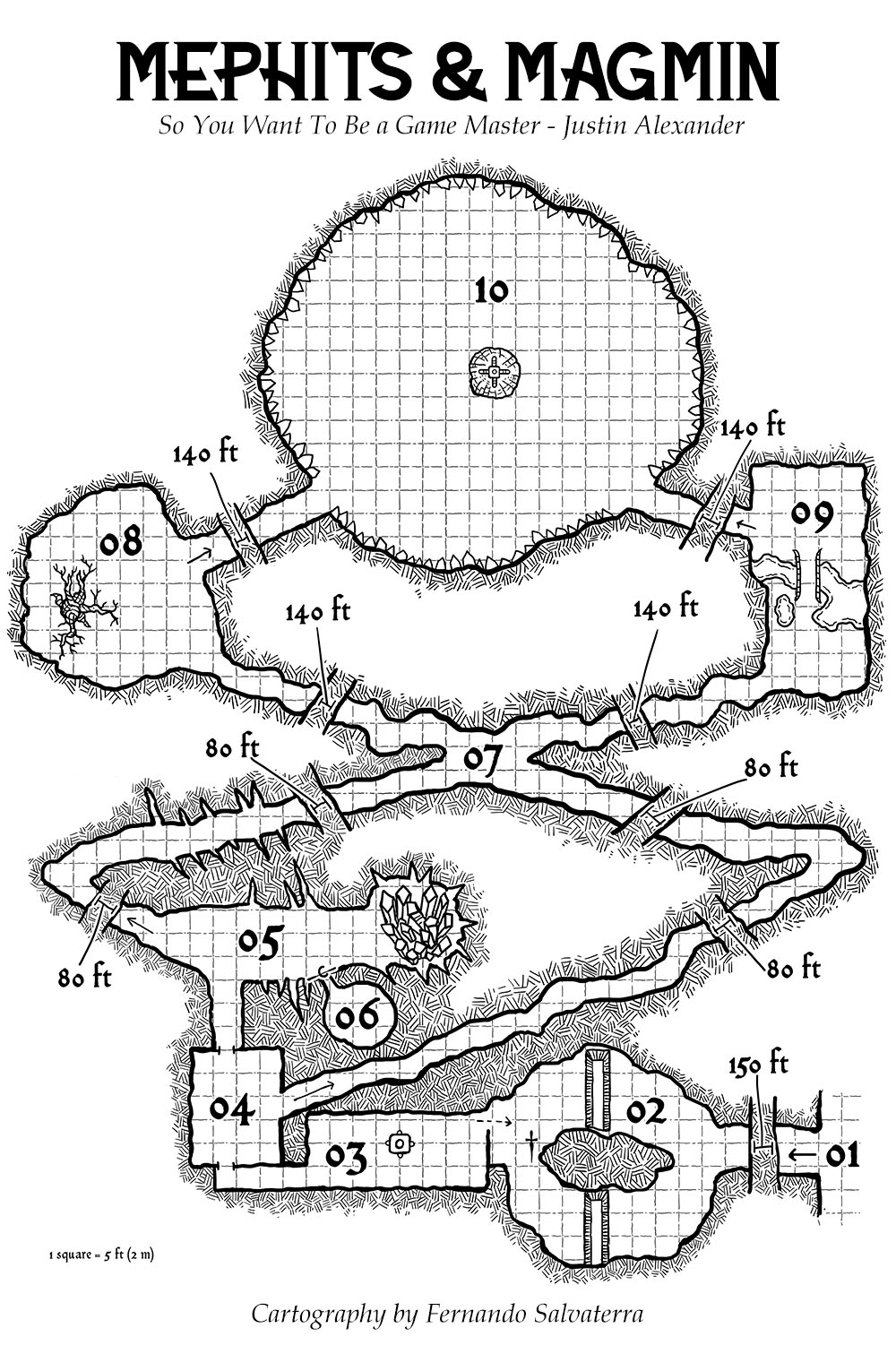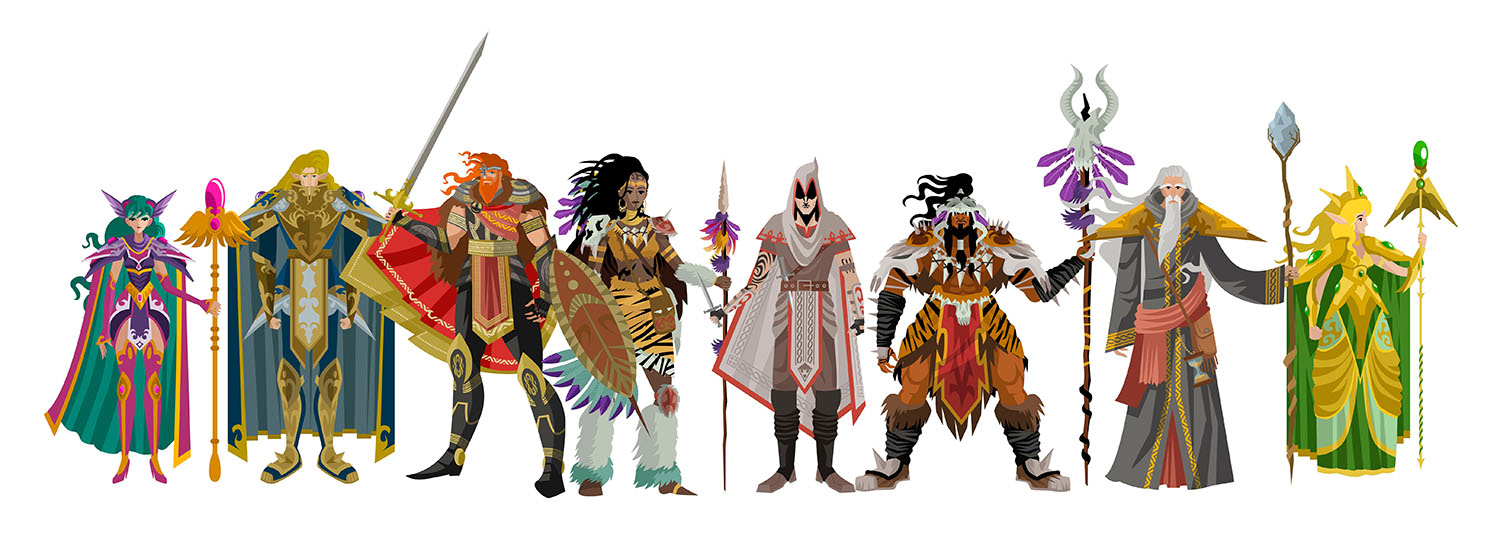
A couple weeks back, when I was chatting with Baron de Ropp for Dungeon Masterpiece, we had a fun little idea for a unique (and slightly kooky) way to think about roleplaying characters, particularly if you’re a GM who needs to roleplay a bunch of different characters in every session.
Before we can dive into that, though, I want to have a quick word with the people reading this who are looking for the One True Way™ of roleplaying games, because that’s an attitude that can create a lot of cognitive dissonance here on the Alexandrian, where my philosophy is much more about finding the Right Tool For the Job™. There are lots of different techniques you can use while playing a character, prepping a scenario, or running a game, and I’m far more interested in adding new tools to my toolbox and learning new ways to use the tools I already have than I am in trying to raise one of those techniques onto a pedestal.
Nevertheless, I still see people trying to use node-based scenario design for everything and getting frustrated when it doesn’t work. Or getting confused when I talk about how to structure a linear campaign, because I’m “supposed” to be the Oracle of Sandboxes. Or deeply angry with me because I know that Once Upon a Time and Eclipse Phase can’t be played in the same way.
The reason I say all this is that I’m really hoping you can approach this article as a fun little way to think about roleplaying. I think there’s some cool stuff to discover thinking about roleplaying this way, but I really doubt that’ll happen if we get stuck trying to think of it as the One True Way™ of roleplaying our characters.
SPELL COMPONENT ROLEPLAYING
The Universal NPC Roleplaying Template is a tool for efficiently describing significant NPCs in your campaign, organizing the information in a consistent format that (a) makes it easy to pick up and quickly start playing the NPC, while (b) making sure you don’t miss any details that are essential for the current scenario.
One section of this template is literally “Roleplaying.” I recommend including two or three bullet points here, each describing a distinctive trait of the character that you can use to bring them to life. The idea is that each trait provides a “hook” that you can very easily reach out and grab, giving you a quick grip on the character.
For maximum effectiveness, I further recommend that each trait be significantly different from the NPC’s other trait. A distinctive physical mannerism, for example, is great, but three different mannerisms may be more difficult to use or they might turn into a bit of a muddle compared to, for example, having both a physical mannerism and a unique accent.
This isn’t a hard-and-fast rule, of course. But it’s a useful guideline.
But how can we know if two traits are sufficiently different? And is there anything that could help us brainstorm different roleplaying traits?
Well… An accent would be a verbal trait. A nervous twitch, on the other hand, would be a physical one. Or, instead of “physical,” we could say somatic.”
… can we classify roleplaying traits as if they were D&D spell components?
Of course we can.
VERBAL COMPONENTS
When we talk about roleplaying, we often default to the verbal components. Since we’re all sitting around a table (or in a group call) talking to each other, this makes a lot of sense.
Furthermore, a lot of attention — probably too much attention — is given to accents and other “funny voices.” Obviously, though, if you can affect a wide range of distinct vocal personalities, use those as appropriate.
You don’t need to be able to do full-blown voices or accents, though, to vocally distinguish characters. You can often create a very distinct and memorable voice for an NPC by just focusing on a single vocal character, such as:
- Pitch (a voice deeper or higher than you normally speak)
- Speed (slower or faster than your normal speech)
- Volume (e.g., always speaking in a raspy whisper)
- Vocal tic (e.g., rolling your R’s, a lisp, or stutter)
A distinctive pattern of speech can also be useful. A classic example of this Yoda is. Alternatively, you might have a character who:
- Almost always responds to a question with another question.
- Yells when they’re lying.
- Says, “Don’t you think?” whenever they finish speaking.
This can bleed over into having an actual catchphrase or unique turn of speech. For example, I played a pulp detective named Jack Hammer who liked to refer to his punches as jackhammers — e.g., “Have a taste of my jackhammers!” On another occasion, I had an elf noble who said, “Let the wizard speak!” so often that it became a running joke in the campaign.
Alternatively, you can boil this down to a single, distinctive favorite word. Pick something exotic or esoteric — perhaps even something from a foreign language (e.g., a Russian who always says “Nyet”) — and then find every opportunity you can to drop into the character’s dialogue. Distinctive epithets are great for this. For example, if I say, “By Crom!” you likely instantly know who I’m talking about.
SOMATIC COMPONENTS
Even though we’re just sitting around the table talking, there’s still a wide range of physicality you can use to embody a character.
The most basic somatic component is a physical gesture:
- Stroke your chin
- Pull on your earlobe
- Tap you nose
- Wink
- Tug your braid
- Drum your fingers on the table
- Scratch your elbow
The possibilities are almost endless! And take note that the gesture doesn’t have to be large or gaudy. Subtle gestures, in fact, can be even more useful because they can often be repeated more frequently without becoming tiring.
Another option is a physical tic, which is similar to a gesture, but is usually involuntary.
Posture can also be a powerful option. Think about how you’re sitting in your chair, where you hold your hands, and the inclination of your head.
I really like having a distinct somatic component for each NPC, because it not only provides a clear signal to the players for who’s talking; it’s also a great way for you to jump into character: Just hunch your shoulder like Rodrigo or give Roberta’s sly wink and you’ll instantly slip into the role.
If you’re struggling to come up with a somatic component for a character, think about each part of the body – head, face, neck, torso, shoulders, arms, legs, etc.: How could you use it? Move it? Touch it?
MATERIAL COMPONENTS
Material components probably the last thing most tabletop gamers think about when roleplaying, but they can pack a big punch when you can figure out how to use them. For example, when running Trail of Cthulhu games set in the ‘30s, I’ll often buy a pack of candy cigarettes. Invoking the ubiquity of smoking really brings the time period to life, and cigarettes offer a huge range of characterization — from femme fatales gracefully asking for a light to gambling addicts with nicotine-stained fingers to a nervous witness who can’t keep the cancer-stick steady in their hands.
You probably don’t want to haul around a huge chest full of objects and need to go digging through it every time a new NPC pops up, of course, but small, handheld props can provide a great touchstone for a special character: The henchmen who rolls a coin across his knuckles. The nervous damsel in distress clutching her rosary.
Keep in mind that you don’t need the perfect prop: Proxies are perfectly acceptable, whether it’s a modern quarter standing in for a fantasy gold piece or a convention lanyard serving as an ersatz rosary.
Similarly, when improvising characters, be aware of the props and proxies and you’re already carrying: Got a wedding ring? Great! The witness can be nervously spinning theirs. Wanna smoke? Light up a pencil. The archvillain should be peering at the PCs through a ruby? Pick up a d20 and pretend!
The other major category of material component is costumes. These probably need to be used with even more caution than props, and I’m certainly not suggesting you do full-fledge quick-changes at the gaming table. But one or two items you can quickly affect can have a large impact. (I once carried an eyepatch around a convention and roughly half my PCs that weekend used it for impact.)
Even better, don’t forget that you can use the clothes you’re already wearing for effect: The Picard maneuver doesn’t require you to be wearing a Starfleet uniform. Taking off your glasses and slowly polishing them can be a wonderful character affectation, as can be loosening your own tie, tugging at your collar, or snapping the band of your watch.
As a final note, if you’re comfortable doing it, mime can be a great way of invoking material components even if you don’t have any to hand: You can smoke with out a cigarette, tighten a tie you’re not actually wearing, or even gesture with a sword made out of air.
Because, after all, when it comes to roleplaying, the only true limit is your imagination.
